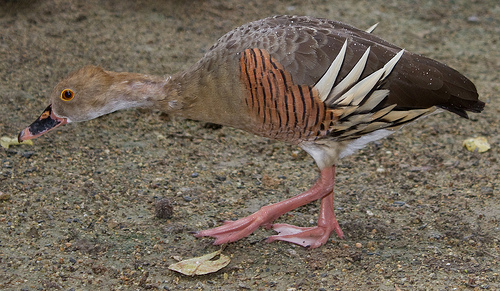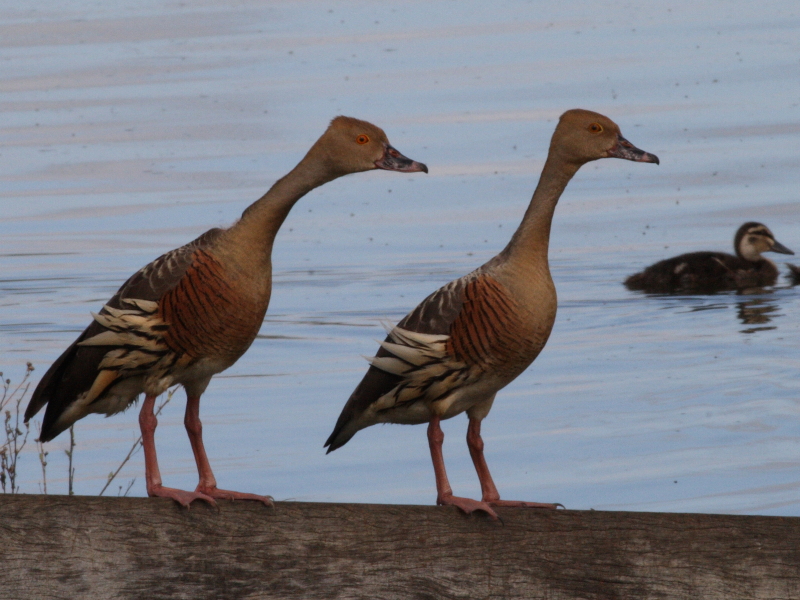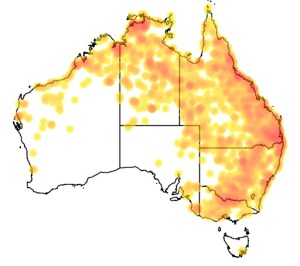Colours
Distinguishing features
It is a long-necked duck with brown upperparts, paler underparts and a white rump. The chest is chestnut with thin black bars, while long black-margined plumes arise from its flanks. Its bill and legs are pink, and its iris is yellow. The male and female are similar in appearance. The species has a characteristic lowered neck and short, dark, rounded wings while flying. (Wikipedia)
Size
- From 42 cm to 60 cm (Length of specimen)
Wingspan
- Wingspan data is not yet available.
Synonyms
Distribution
Distribution and habitat preferences
The range is eastern, northern and central Australia from the Kimberley across the Top End and Cape York, down to southern Queensland and northern New South Wales on the east coast, although may reach northwestern Victoria inland, in the vicinity of the Murray River. It is also found in New Guinea. The preferred habitat is tall grassland and savanna, often near bodies of water. (Wikipedia)
Diet
Rather than diving for food in bodies of water like other ducks, the Plumed Whistling Duck feeds by cropping grass on land. (Wikipedia)
Web resources
References
- Simpson, K., N. Day and P. Trusler (2004). Field Guide to Birds of Australia: 7th Edition Penguin Group (Australia), Camberwell, Victoria.



